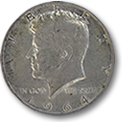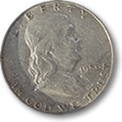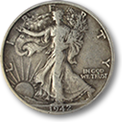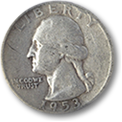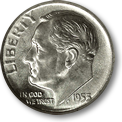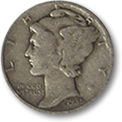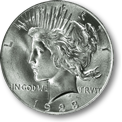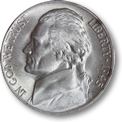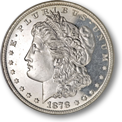History and Usage of Silver over the Millennia
For the entire known history of mankind, humans have found value in the beautiful, versatile metal silver. That value has carried over to today as one of the world's most valuable materials. This incredible enduring worth is no simple coincidence, and is the major reason why silver in almost any form is a great investment. Today, coin dealers and precious metals investors buy silver bullion and junk coins. The bags of junk silver coins were made by the US mint from 1964 and earlier. These bags of coins are 90% silver content.Many of the oldest artifacts archaeologists have found are made of or include silver. Ancient pottery, decorations, and tools have been found containing this precious metal. These incredible finds predate history's great civilization in Egypt, India, China, Central America, and elsewhere. This is incredible for several reasons. First, because it shows that humankind has been utilizing the metal silver for thousands of years, and second, the fact that the silver artifacts even still exist is a testament to silver's incredible lasting power.
Most other ancient signs of peoples have been destroyed by the ravages of time. Wood rots away, stones crumble into dust, and most metal tools rust into nothing. But not silver. Silver does not erode like most materials, nor does it oxidize like many metals. It can tarnish, but only at a very slow rate and in a way that is very easy to clean. The junk silver coins of the past century are sometimes cleaned to show their brilliant silver patina. Silver coins thousands of years old can also be cleaned to reveal details of the metal behind the encrustation. This resiliency makes silver one of archaeologists' most valuable tools for studying and understanding ancient man.
Silver was a popular metal in both coins and jewelry for many millennia. For instance, part of Rome's rise in power and influence can be attributed to the consistent amount of silver included in its bullion and money. From Japan to Africa, white gold, as it is sometimes called, was treasured everywhere. As one of the few universally loved materials in the world, it became a kind of international currency, spurring trade between civilizations and cultures. It was one of the most common goods carried along the legendary Silk Road that spanned from Europe to Asia.
As European nations rose to become dominant powers, silver was as treasured as ever. Ancient silver coins from Spain, Italy, France, England, Denmark and elsewhere are priceless pieces of history and valued especially highly by collectors. As the age of imperialism rose, silver's importance only rose as it became a way for imperial powers to exchange wealth with each other and their colonies. More importantly, it motivated the exploration boom that lead to the discovery of the Americas and other exotic places unknown to the "civilized" world. The Spanish for example came to the Americas in search for gold and silver. They minted their silver pieces of eight and sent them back to Spain by the tons. This great wealth of silver lead Spain to become one of the world's leading powers at the time. These old Spanish silver pieces of eight coins are highly sought after today. Their intrinsic silver value is added to the numismatic value of the coin to obtain the final value. Junk silver coins of yesteryear generally are worth only their intrinsic metal value in silver, and have no significant numismatic collector value.
The precious metal silver has significance in history for many cultural reasons as well. For instance, it is mentioned in the first book of the Bible, Genesis, when Joseph is sold away by his brothers for a handful of silver coins. This story is repeated in an eerily similar way in the New Testament when Jesus is famously sold out by his disciple, Judas, for 30 silver pieces. Greek mythology says the Olympians made a race of silver people early in creation. Silver also holds a place in some Muslim cultures as one of the few kinds of jewelry a man may wear, and the prophet Muhammad is said to have worn a silver ring. Silver and its liquid counterpart, mercury ( or "quicksilver"), were instrumental ingredients in traditional alchemy practices. It is also an important part of many Indian and Asian beliefs and legends, and sometimes played a role in the many pagan practices that dotted Eastern Europe.
The exact reasoning for silver's incredible value through the ages is unknown. It always seemed to have some kind of intrinsic, universal worth that everyone agrees on. This comes partly from its lasting ability discussed earlier. It also comes from the versatility of the material. As one of the softest metals, silver can be formed into many shapes and easily alloyed with other metals. It can easily be turned into whatever the crafter wishes. Much of its modern value comes from its high conductivity rates, making it the metal of choice for high end electronics. It also has antibacterial properties and is useful in medical equipment. More recent needs for silver are in the production of solar cells. Perhaps most importantly of all, though, silver is simply beautiful, and man has always been infatuated with pretty shiny things.
The lasting value of silver is not to be taken lightly, especially considering the state the world is in now. At one time, all of the printed money in the United States was backed by an equal value of gold or silver held by the US Treasury. There were silver certificates that could be redeemed for the printed amount of silver it represented. Paper currency such as a ten dollar bill, was backed by the precious metal gold. We've all heard of the gold being stored in Fort Knox. Back then, there was theoretically a certain piece of actual silver or gold in a vault somewhere for every piece of printed money or silver certificate in the country. Unfortunately, the US government decided it would be an easy thing to print money that was not backed by anything. All they had to do was remove the dollar from this gold standard. From that point on, United States currency has value solely because the government says it does. Not very convincing, is it?
So far, this system has worked surprisingly well. Surely one reason for the success is other countries do the same with their fiat paper currency. The dollar is the world's dominant currency. But that might not last forever. The U.S. is still struggling to free itself from the global recession, and it goes further into debt every day. Unless something is done soon, this debt will catch up with it, with disastrous effects. The dollar could well lose most if not all of its value over a matter of years. Hopefully, something will be done to get the national debt under control and this crisis will be averted. But that depends on having politicians who will make the necessary spending cuts.
If the dollar falls, the investments of most Americans will be worth nothing. Paper money, savings bonds, and bank checking and savings accounts will be almost meaningless if a loaf of bread costs a thousand dollars. In the event of such a disaster, the imaginary value the government places on money will evaporate. Luckily, there is a way to avoid this loss in value and to have a hedge against inflation. Silver has held its value for thousands of years. It has seen countries and empires rise and fall, but remains one of the few things accepted everywhere has having a high worth. Furthermore, it is universally accepted everywhere as a store of value. It will maintain its value through the worst financial meltdowns imaginable. Should such an economic state ever exist, silver will still be accepted by local and international traders, even when a billion dollar Federal Reserve note won't get a gallon of gasoline. Think that's impossible? Remember, Zimbabwe was recently printing notes with face value numbers in the trillions.
If this happens, money will have little use other than as toilet paper. Again, sound unreasonable? Look at the history of Germany in 1923 and how paper money was burned for fuel as it was cheaper than buying wood. Other tangible, useful things like tools, food, and valuable materials will be what people want and can place value in. Among these items, silver is especially useful to individuals because it holds so much worth in such a small amount. Thousands of dollars worth of silver can be held in the palm of your hand; much more convenient than investing in, say, metal structural beams or copper rods and tubing.
Silver is basically a no-risk investment. History shows that it's an enduring material treasured by all people over thousands of years. It will always at least hold a reasonable amount of value, even if that value in today's currency goes up and down some. There's a finite amount of silver in the world, and the planet's silver mines are being emptied at an increasingly rapid pace. With a finite supply and a perpetual continuing demand, silver prices can really only go up over the years. That's why it's a safer bet than, say, the stock market. Even if there is no financial meltdown looming in the next few years, silver is still a great way to store money. And should the worst happen, it will prove to be an even better choice as other financial stockpiles are suddenly worthless.
Silver can be accumulated in several ways. Some people prefer to simply buy silver bullion, basically solid silver bricks of various sizes that can be easily weighed, measured, and utilized. Others prefer to accumulate silver jewelry, either in pure forms or with jewels mounted in it. A similar approach is to buy silver ornaments and tools, such as silver candlesticks or platters.
Old junk silver coins are generally considered the best method of holding silver for the long term. These are coins that have no significant numismatic value and are valued only for the intrinsic silver content they contain. Silver was once a dominant metal in currencies around the world, and it's easy to come across them. Those that are in good shape and rare or interesting, usually go to collectors and demand a premium over their silver value. They would then not be considered as junk silver, but as numismatic grade silver coins. In any case, history shows us the human desire for silver has been around for thousands of years and probably will continue to exist.








